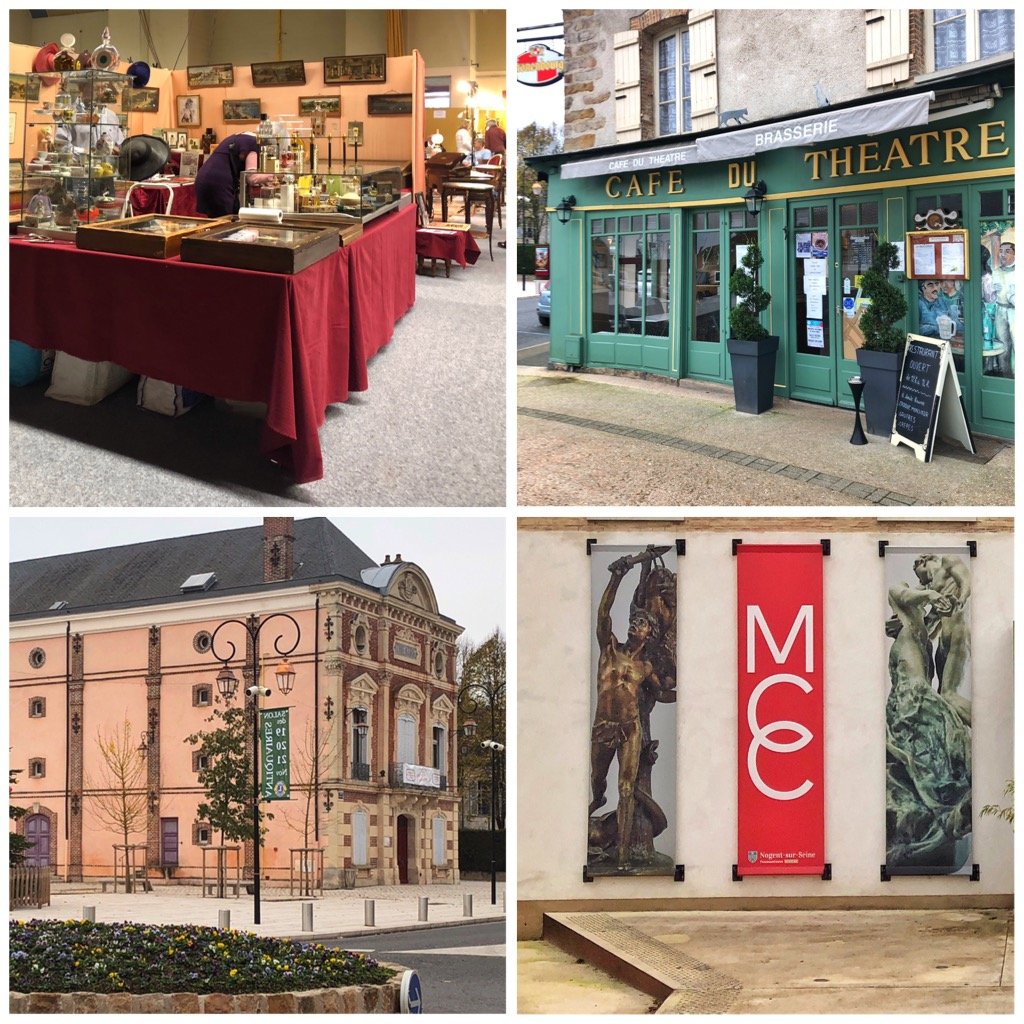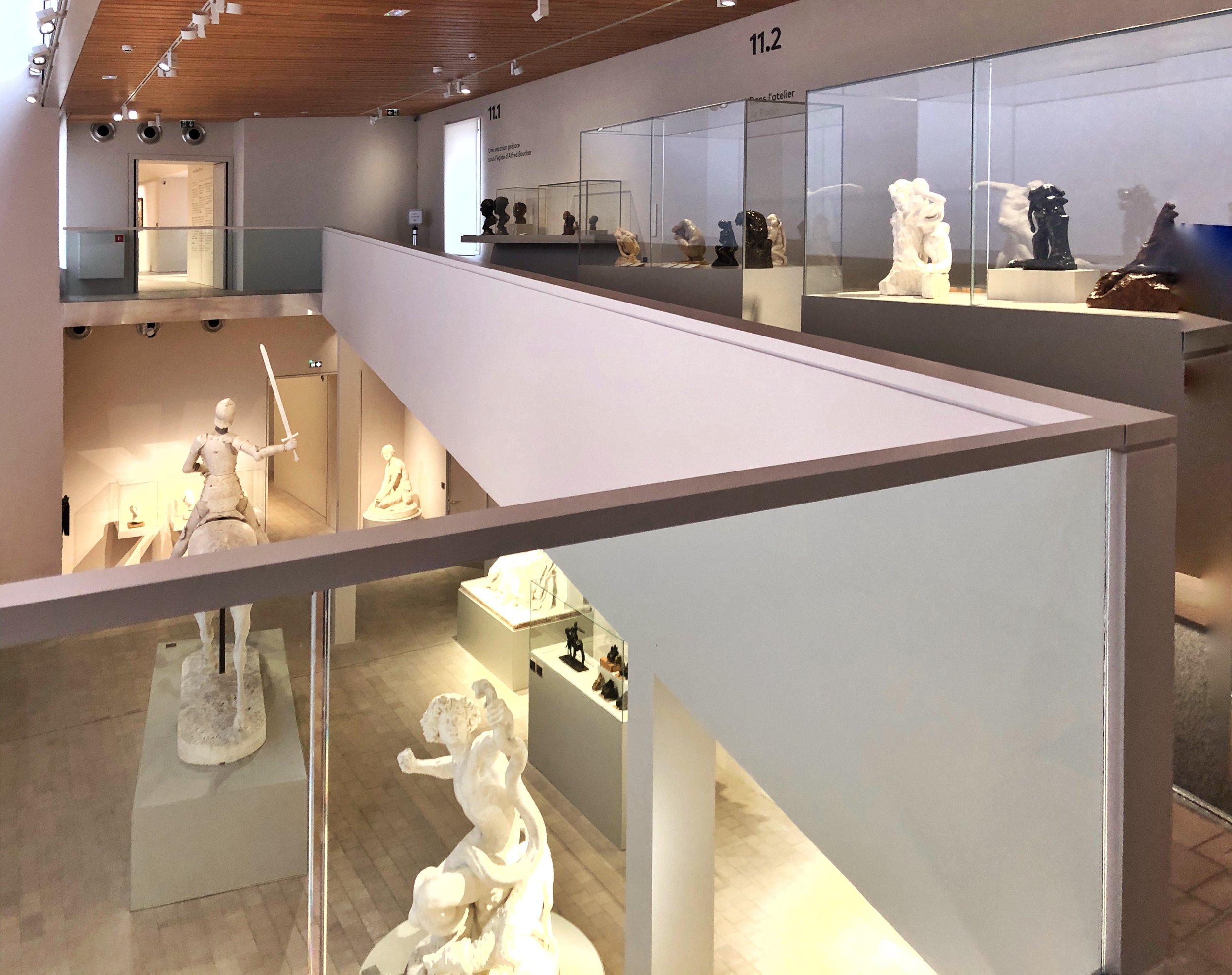Camille Claudel
We had a clear day yesterday so decided to take a trip to the ‘Camille Claudel’ museum in Nogent-sur-Seine, about a 90 minute drive for us. I had also seen that there was an antiques fair on in the local sports centre, so we took a look at that first. There were probably 50 stalls across 2 large halls, selling some beautiful antiques. Lots of glassware and porcelain by Lalique, Baccharat, Dour, also a lot of gorgeous silverware, and real quality pieces of furniture. We were tempted on a small table and a bust, but not enough to make a purchase.
After we went off to have a lunch of croque monsieur et frites in a local cafe.
The museum is set in a modern, purpose built building, amongst the old buildings of Nogent-sur-Seine. There is also a walking tour that can be taken around the town, which takes you past some of the significant buildings and down along the banks of the Seine, but it was quite a chilly day, and we were not sure how much time we’d need enjoying the sculptures, and soaking up the museum, so we might do that another day.
We are always quite surprised how few people seem to visit the beautiful museums that France has to offer. We must have only seen about 8 other visitors, which was delightful for us, as it felt like our very own personal viewing. The first room you enter introduces the important contibutors to Claudel’s life, and tells a little of her story. Her family moved to Nogent-sur-Seine when she was a child, and she was only 12 years old when she started to sculpt in the local clay. Her mum didn’t really like the fact that she sculpted the human body, but her father was more encouraging. He turned to the sculptor Boucher, who happened to be a neighbour of theirs to help encourage her to develop.
You move through into a room that helps describe the lost-wax method, which is a well developed, ancient process that enables sculptors to create beautiful works in bronze, and is a method that is still used today.
Claudel moved to Paris with her mother, whilst her father remained in Nogent-sur-Seine working, helping to support them. She attended one of the only art institutions that would take women at that time, the Académie Colarossi, which was way more progressive than other arts institutions. It not only allowed female students, but permitted them to work from nude male models. She remained a student of Boucher for 3 years, until he moved to Florence to pursue an award.
When he left in 1883, he asked a friend of his, Auguste Rodin, to continue mentoring Claudel. She was to become a source of inspiration for him. She started working with Rodin in his workshop. She also acted as his model, his confidante, and was soon to be his lover.
There are over 200 pieces of sculpture in the museum from different artists, many having impacted on Claudel. Rodin probably being the most famous. She never lived with Rodin, as he was reluctant to end his ongoing 20-year relationship. If you’ve never been, a trip to the Rodin museum in Paris is a must, there is a room there dedicated to Claudel. However I do remember that museum being a lot busier. Here we were enjoying just drifting through each of the carefully set up rooms, being up close to the works of art. So close in fact that in some cases you could touch them, not that we dare.
We just wandered and shared our thoughts, chatted about the different works and styles, what we could see. About how Rodin was so careful at creating weight and movement into his pieces, something he was obviously trying to help Claudel with. She was never really that admired whilst she was alive, in fact she relied heavily on the support of Rodin to keep a roof over her head. Her father had died and her mother and family had disapproved of her art so cut her off. It is only later that her work was really respected for it’s true value.
I always find days visiting art museums very thought provoking, but in a calm tranquil way. Brian had captured his thoughts on Rodins work which I wanted to share, it helped me to view Rodin’s work differently, not just look, but to feel the piece;
“What I love most about Rodin’s work is that it rarely has a single viewpoint. The pieces refuse to exist in that renaissance ideal of the world composed for the viewer. To fully appreciate a Rodin you need to keep moving, so that you can firstly understand, and then begin to realise the work. You cease to be the centre of your existence, and you are forced to accept your place outside the subject, where you become voyeur. This allows you to forget yourself, and focus on the beauty, and emotional power of the other.”






